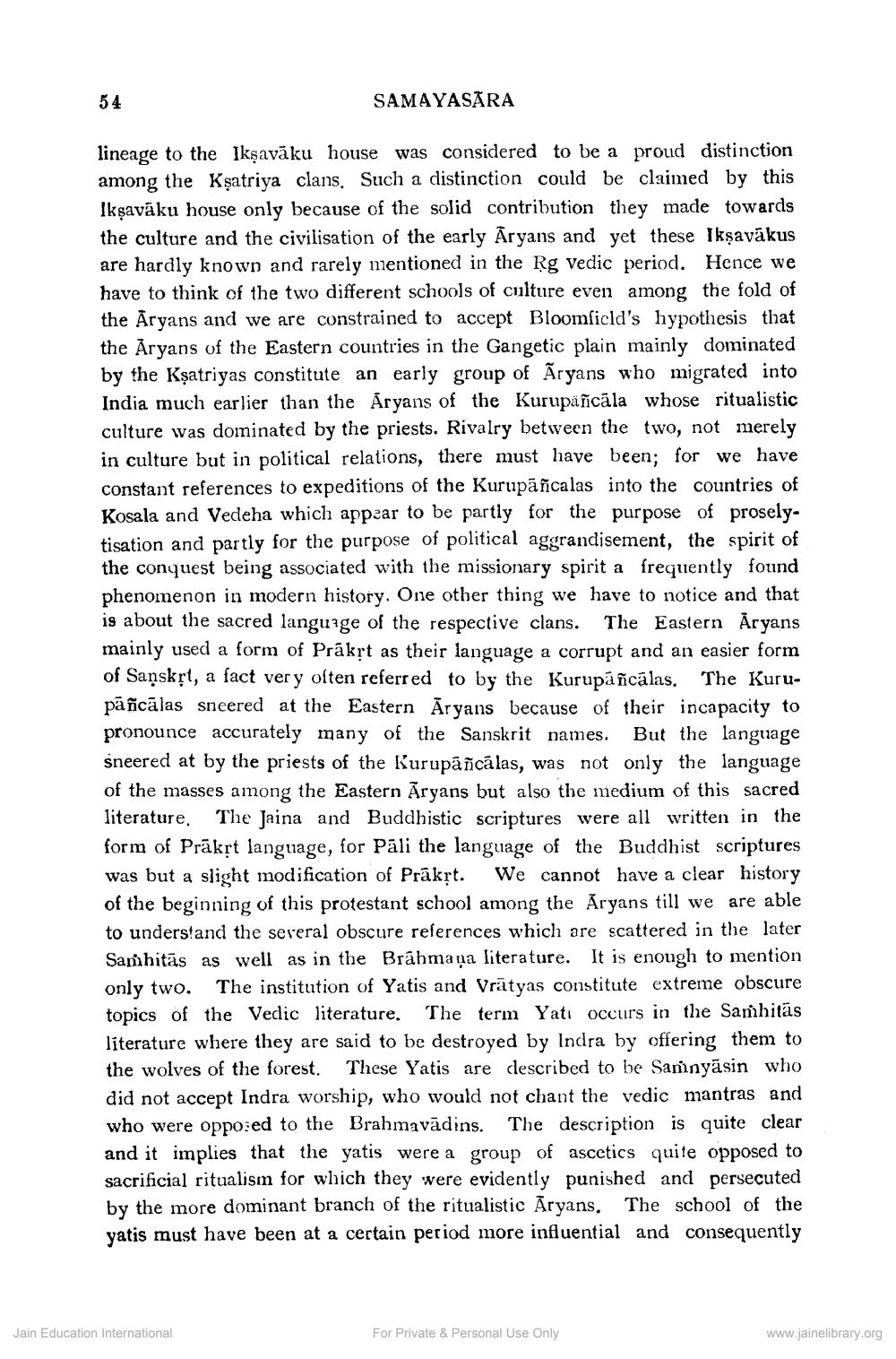________________
54
SAMAYASĀRA
lineage to the Ikşavāku house was considered to be a proud distinction among the Ksatriya clans. Such a distinction could be claimed by this Ikşavāku house only because of the solid contribution they made towards the culture and the civilisation of the early Aryans and yet these Ikṣayākus are hardly known and rarely mentioned in the Rg vedic period. Hence we have to think of the two different schools of culture even among the fold of the Āryans and we are constrained to accept Bloomfield's hypothesis that the Aryans of the Eastern countries in the Gangetic plain mainly dominated by the Kșatriyas constitute an early group of Aryans who migrated into India much earlier than the Aryans of the Kurupäñcāla whose ritualistic culture was dominated by the priests. Rivalry between the two, not merely in culture but in political relations, there must have been; for we have constant references to expeditions of the Kurupāscalas into the countries of Kosala and Vedeha which appear to be partly for the purpose of proselytisation and partly for the purpose of political aggrandisement, the spirit of the conquest being associated with the missionary spirit a frequently found phenomenon in modern history. One other thing we have to notice and that is about the sacred language of the respective clans. The Eastern Aryans mainly used a form of Prākrt as their language a corrupt and an easier form of Saņskřt, a fact very often referred to by the Kurupāñcálas. The Kurupāñcālas sneered at the Eastern Aryans because of their incapacity to pronounce accurately many of the Sanskrit names. But the language sneered at by the priests of the Kurupāñcklas, was not only the language of the masses among the Eastern Aryans but also the medium of this sacred literature. The Jaina and Buddhistic scriptures were all written in the form of Prākrt language, for Pāli the language of the Buddhist scriptures was but a slight modification of Prākst. We cannot have a clear history of the beginning of this protestant school among the Aryans till we are able to understand the several obscure references which are scattered in the later Sanhitās as well as in the Brāhmaṇa literature. It is enough to mention only two. The institution of Yatis and Vrātyas constitute extreme obscure topics of the Vedic literature. The term Yati occurs in the Sanhitās literature where they are said to be destroyed by Indra by offering them to the wolves of the forest. These Yatis are described to be Samnyāsin who did not accept Indra worship, who would not chant the vedic mantras and who were oppo:ed to the Brahmavādins. The description is quite clear and it implies that the yatis were a group of ascetics quite opposed to sacrificial ritualism for which they were evidently punished and persecuted by the more dominant branch of the ritualistic Aryans. The school of the yatis must have been at a certain period more influential and consequently
Jain Education International
For Private & Personal Use Only
www.jainelibrary.org




